What’s New?
- 26 October 2020 – Customs Procedure Codes (CPC)
- 25 October 2019 – Customs Status Response Message Codes
What is Clearance Declaration?
Importers and exporters and their clearing or registered agents must be registered or licensed as prescribed in SC-CF-19 – Registration Licensing and Designation – External Policy, before submitting a Customs Clearance Declaration (CCD).
Every importer or exporter of goods must lodge a CCD, except when exempted by specific rules before the goods are imported to or exported from South Africa. Clients make a self-assessment with the transaction documentation and submit the CCD to Customs either electronically or manually. Customs replies with a CUSRES message. The status codes and completion of the CCD are explained in the SC-CF-04 – Completion of declarations – External Manual.
Electronic Data Interchange (EDI) clients experiencing technical problems/difficulty, for example difficulty to insert the provisional payment (PP) requirements, must contact their Service Providers or the SARS Contact Centre to log a call to Customs on their behalf and on good cause shown may be allow/approve an alternative process for a specific period. Provisional payments on imports are completed on the CCD. If you are an EDI client who is not using servicer provide, you need to contact our Contact Centre.
Customs can release the consignment or request supporting documents validation to check the correctness of the CCD by means of a documentary inspection. The client submits the supporting documents via e@syscan or hard copies, which are scanned at the Customs Office for attachment to the relevant case on the system. Clients are required to prove the origin of the goods when preferential rates of duty are applied. Once all the supporting documents as requested are received, the case is routed for an inspection.
If the supporting documents are not on hand, the client may apply for a sight declaration (DA 22).
Clients may request expedited clearances, conditional or embargo release if the set criteria are complied with.
Once all the consignments have been released, the goods may either be imported into South Africa or be loaded onto the carrier which will remove it from South Africa. Goods may only enter or leave South Africa through ports of entry or exit designated for that purpose in the Rules. Goods may be imported or exported via rail, air, sea or road. Some imports or exports may require an import or export permit.
Clients dealing with bonded goods or goods moved in transit with the temporary suspension of duties and VAT must retain the proof of export in order to acquit them of their liability for the duties and taxes. For more information you can refer to SC-TR-01-02 – Acquittal of Customs Declarations – External Policy.
Any goods that are being recovered from an abandoned wreck are regarded as imported goods and the local or non-local registered client (searcher) must submit a CCD bringing revenue to account.
Export declarations where a drawback of duty and taxes are envisaged must at time of lodgement of the CCD contain the appropriate drawback item in terms of the applicable Schedule as well as the correct CPC. All the notes and specific requirements for the specific drawback item must also be adhered to. Exporters and clients who wish to claim a drawback in terms of Schedule 5 must be registered with Customs. Exportation of any goods under the provisions of a drawback item is subjected to the approval of the Commissioner.
When it is a requirement of the applicable drawback item it is the responsibility of the client to apply for an examination without prejudice (EWP) in order for the container to be packed or sealed under Customs supervision.
Drawback applications are submitted and processed as prescribed in terms of customs SC-DT-C-13 – Refunds and Drawbacks – External Policy.
CCDs may be required to be amended or cancelled depending on the circumstances.
Certain imported goods (Section 38) are cleared on a simplified clearance procedure (DA 306 – Application for release of goods in terms of Section 38 1 a of the Customs and Excise Act Act 91 of 1964) instead of a CCD if the Controller/Branch Manager grants permission.
Any person whose rights have been adversely affected by administrative action has the right to be given written reasons, as contemplated in the Constitution of South Africa.
You can refer to the SC-CF-55 – Clearance Declaration – External Policy document for more information.
For more information on other customs processes related to clearance declaration you can access the links below:
Related Documents
SAD 500 Customs Declaration Form – External Form
SAD 502 – Customs Declaration Transit Control – External Form
SAD 505 – Customs Declaration Bond Transit Control – External Form
SC-CF-04 – Completion of declarations – External Manual
SC-CF-19 – Registration Licensing and Designation – External Policy
SC-CF-26 – Application to Submit Cargo Reports – External Manual
SC-CF-30 – Invoice Requirements for Customs – External Policy
SC-CF-55 – Clearance Declaration – External Policy
SC-DT-C-08 – Completion of DA 64 – External Manual
SC-DT-C-09 – Completion of DA 63 – External Manual
SC-TR-01-02 – Acquittal of Customs Declarations – External Policy


